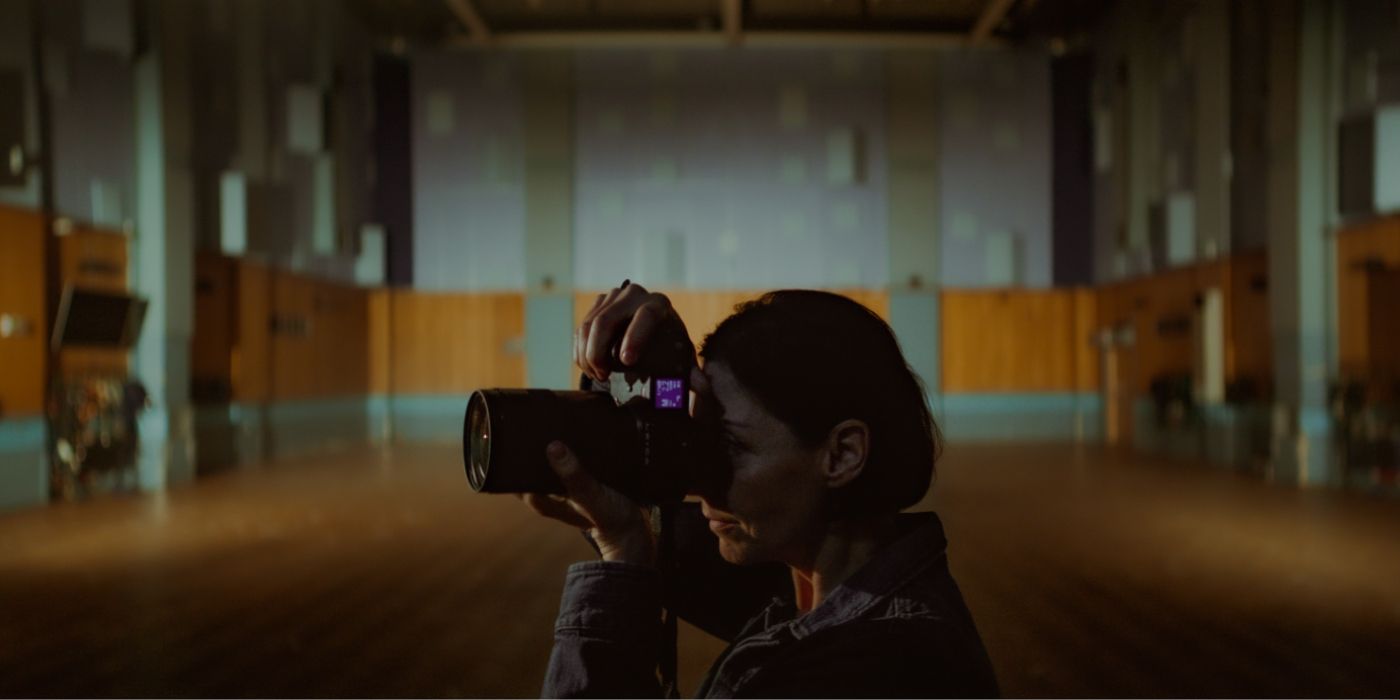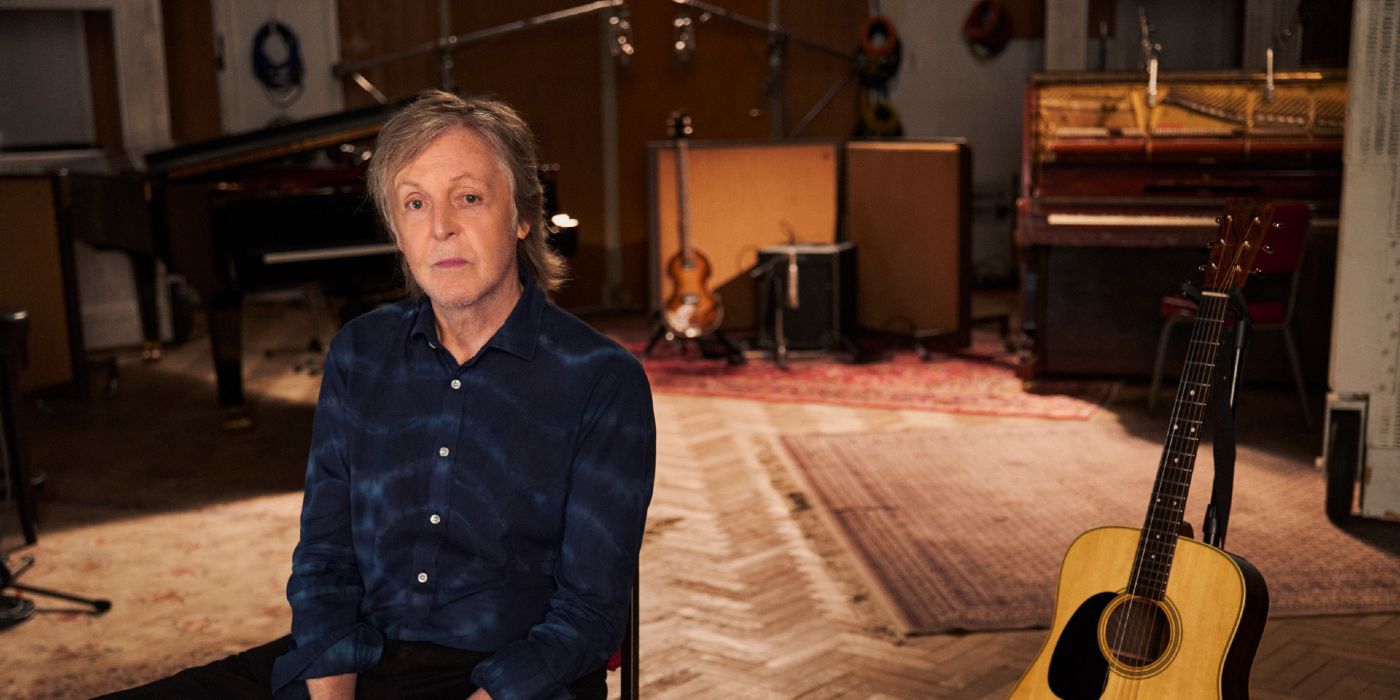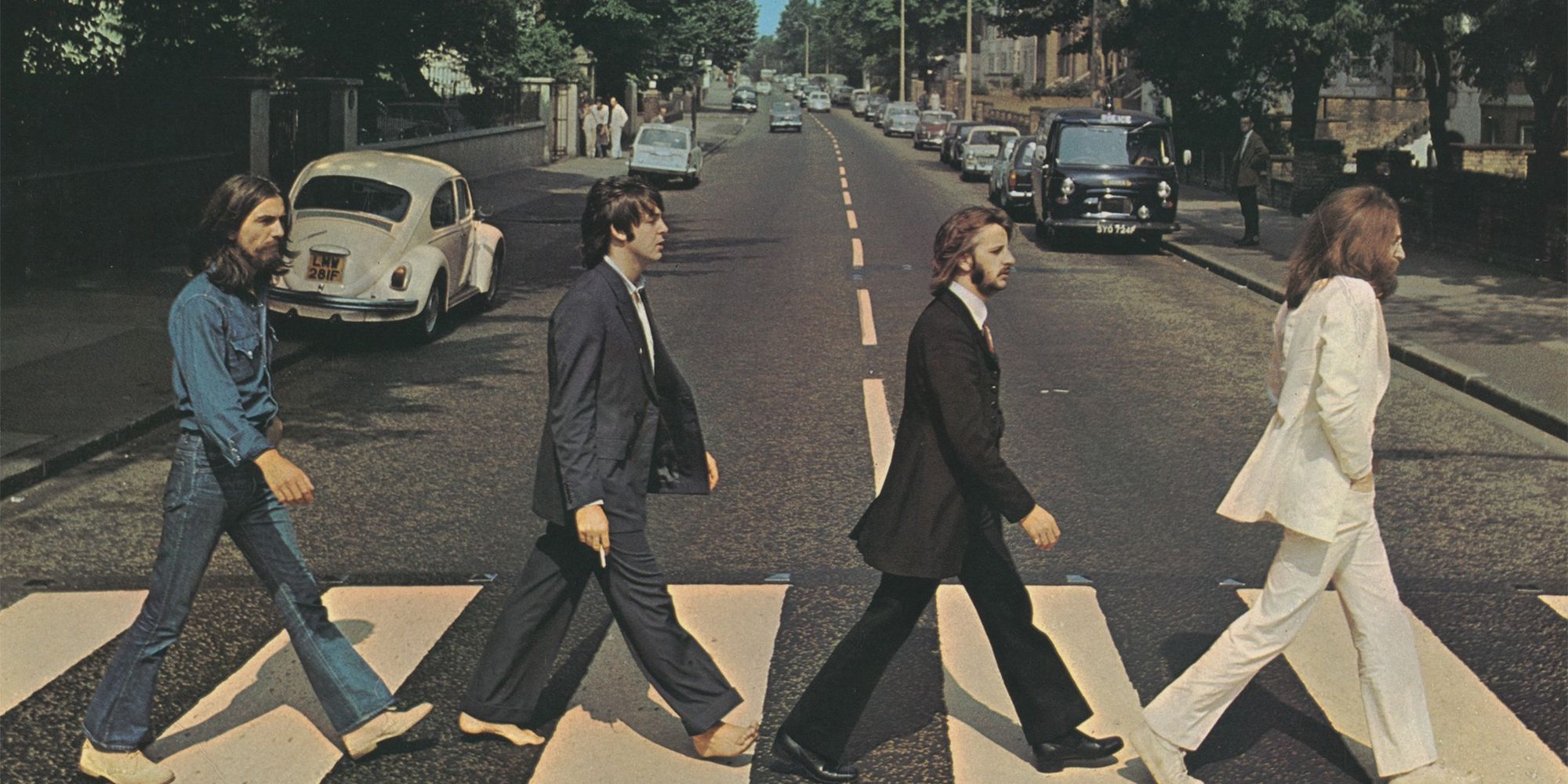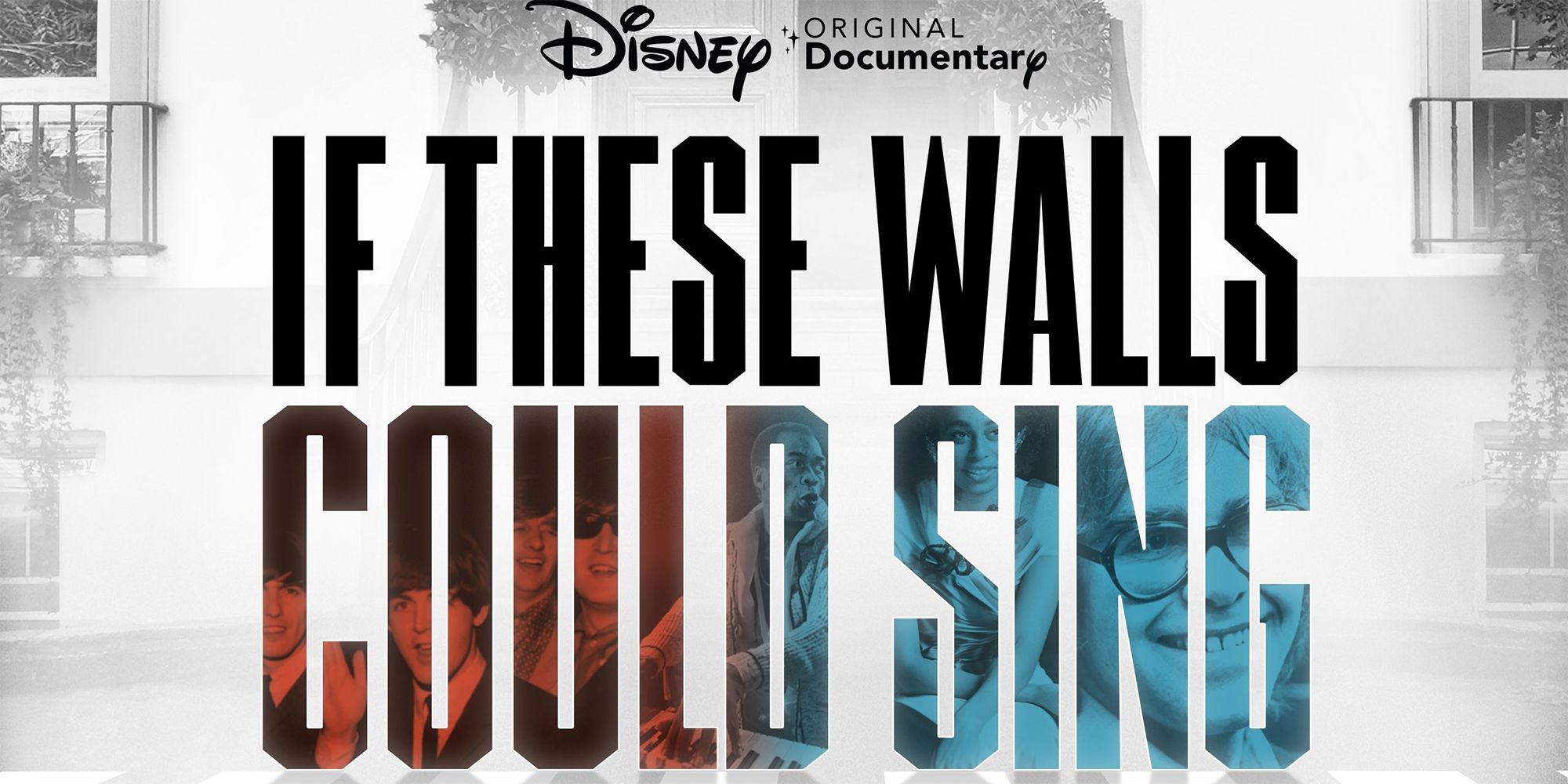When most people think of Abbey Road, what immediately comes to mind is the Beatles' iconic cover, and for good reason. But it's so much more than just the name of a classic album or the studio that recorded one of the most popular bands of all time. And that's what director Mary McCartney set out to learn and show the world in her upcoming documentary, If These Walls Could Sing.
Some artists she speaks with include Roger Waters of Pink Floyd for Dark Side of the Moon and also composer John Williams for Star Wars, Indiana Jones and Harry Potter. Of course, Mary also interviews her father, co-singer and bass player Sir Paul McCartney of the Beatles, along with his bandmate and drummer Ringo Starr to recount their experiences recording at Abbey Road. If These Walls Could Sing is chock-full of stories that even the most fervent Beatles fans might not be aware of.
To guide viewers through the star-studded history of Abbey Road Studios, director Mary McCartney answered questions from Screen Rant via Zoom about her documentary If These Walls Could Sing, which will premiere globally on Disney+ on December 16. One of the most powerful moments that perfectly captures the almost mythical quality of this now-famous studio is when Ringo relates how the cover for Abbey Road was going to be shot at some far-off exotic place like Egypt. And yet, a mere pedestrian crossing nearby Abbey Road was enough to capture the hearts and minds of everyone across the globe, more so than even some of the most humbling sites in the world like the pyramids could have ever hoped to accomplish.
Mary McCartney Talks If These Walls Could Sing
Screen Rant: I’m showing my ignorance here, but I had no idea that Abbey Road’s history went back to 1931. I’m guessing that this may have been one of the reasons why you made this documentary, to show that it was more than just the name of the iconic Beatles album?
Mary McCartney: Yes. Like you, I had no idea that Abbey Road Studios had first opened 90 years ago, and when I was asked to direct this documentary, I spent the first part of the process learning all of the history, all of the artists that had gone through there. There was way too much to put into a feature documentary, but I picked the famous names like the Beatles and Pink Floyd when they did Dark Side of the Moon. I was also really happy to explore the lesser known artists like Jacqueline du Pré and peppered it with stories that I think will surprise and entertain the viewer.
One of the most powerful moments was with Sheku Kanneh-Mason because of how his story connected with Jacqueline du Pré’s. How did that come together? Was it planned or serendipitous that Sheku happened to be so influenced by her?
Mary McCartney: One of the beautiful moments was the story about [Edward] Elgar's Cello Concerto. I knew in the documentary that we needed a tribute to all of the classical music that had been recorded at Abbey Road over the years. I used Jacqueline du Pré, who I have always admired, as one of the main talents.
What was amazing that I found out she had preformed Elgar's Cello Concerto, which tied in perfectly with that Elgar opened the studio in 1931 and performed there regularly. And then when I was researching more up-to-date musicians and artists, I found Sheku and was delighted to find out that he had performed Elgar's Cello Concerto. When I did the research call with him, it became apparent that he was really influenced by Jacqueline du Pré, so it was that full-circle moment that I just think came together perfectly.
Your documentary seemed to end on the perfect note with Celeste’s “Hear My Voice.” I’m wondering if there were any other performers in Abbey Road after Celeste at the time of production, or if you decided to end the documentary with her performance. It was a great creative decision.
Mary McCartney: Abbey Road is a really active studio. Ironically, when I was filming in Abbey Road, I really had to fight to get dates to gain access to the studio space since it's just constantly busy and booked up well into 2023. So there are many artists that you could carry the documentary to present day. For instance, I really like Little Simz who I really respect as an artist.
I find sometimes with music documentaries that they peter out a bit at the end. You have this fabulous history of all of this music that has been recorded and then when it gets to present day, it sometimes becomes less exciting. It doesn't have a definite ending. I was really looking at what the ending was going to be. What's the ending going to be? How am I going to give it a full stop and make the audience feel like it's complete? I actually had the honor of working with Celeste a couple of times and taking her [photography] portraits, so I knew her beforehand. And when I found out that she recorded there and found the archive footage of her performance, I knew I had to interview her. And that just brings it to a really nice ending.
Hopefully, the story will be never-ending because that means the studio will stay open forever. But, yes, I purposely picked that as the full stop because I just think it gives the perfect atmosphere and feeling of Abbey Road to end on.
What this documentary just drove home was that music seems to have really lost how artists can use their surroundings to experiment with sound. Do you agree? Would you like artists to use Abbey Road as the Beatles did?
Mary McCartney: I don't know if I agree that artists don't use their surroundings. I feel like if you're in your bedroom and use all the right technology, artists will use their surroundings. But I do agree with artists not being able to go into studios as much. Maybe it's lost the chemistry of bouncing off of different musicians.
The great thing about studios, as was said in the documentary, is that it's a meeting place with other talent where they can sort of inspire each other. For instance, one thing I did not know before I started working on this documentary - even though I've grown up going to Abbey Road - is that to this very day in the studio, there are instruments lying around and there are tape machines and other items in the hallway. And because Abbey Road did comedy records there, they have sound effect libraries. Those things in Abbey Road really inspired musicians.
You'll hear some examples like that in Dark Side of the Moon and Mrs. Mills' piano, which was literally just in the corner, ended up being the famous piano in [the Beatles song] "Lady Madonna." So that had really inspired it. But I think artists will utilize whatever space they're in with modern technology. However, studios allow really 100 percent focus.
Star Wars was one of the most exciting things about the documentary that I hadn't known about.
Mary McCartney: I didn't realize the impact that movie soundtracks had on Abbey Road's history. All of these incredible movie soundtracks have been done at Abbey Road. It had Star Wars. It had Indiana Jones. It had all of the Harry Potter films. The list goes on. Even to this day, film soundtracks are being done there.
One of the great storylines from the documentary is about the contract that brought film scores to Abbey Road and saved the studio to a degree. Studio 1, which was a big studio for orchestras, had been originally used for recording all of the classical music. But when those recordings started to dry up, they were like, 'Well, what are we going to do with this huge studio?' And they were literally looking at plans to make it into a car park or break it up into other studios. So, very timely, Ken Townsend, the manager, heard that Denham Studios was closing and got in touch with them and said, 'Come to Abbey Road.' They then made this contact and quickly pivoted put in a screen To this day, it's the leading studio for film soundtracks. You could do a whole documentary of just all of the film scores that have been done there.
Did your dad [Sir Paul McCartney of the Beatles] inadvertently come up with the title of your documentary? It seems that way at the very end.
Mary McCartney: No, he didn't. He was just being very kind on that particular day. When I was asked to direct this documentary, I was with my dad and said, 'I've been asked to direct this documentary on Abbey Road, and it's going to be called If These Walls Could Sing.' It struck a chord with him, and he said, 'I really like that title.' At the end of my interview with him in the documentary, my question was, 'How has Abbey Road affected your life and what are your memories of it?' And that's when he said the name of the movie. Again, he's a professional, and he had a very good ending point for us. I love that interview because I feel like, with all the interviews I've had during my portrait career as a photographer, it's kinda helped. One thing I'm proud of in the documentary is that the interviews do seem personal, and I think that the subjects were relaxed.
I think you were able to get interviews that not any documentary filmmaker would be able to get just given the familiarity there.
Mary McCartney: I didn't know all of the people. I don't hang out with Elton John. I had never met Jimmy Page before. But I think it's my bag of tricks as a portrait photographer. I try to make the setting nice and relaxed.
There seems to have been a disagreement among Oasis’ band members. Did they actually get kicked out of Abbey Road or not?
Mary McCartney: I think that they were being a bit raucous. But I don't know if they got kicked out. They definitely left because they moved to a recording studio outside of London. I'm not 100% sure. But I would say that management thought that maybe it was time to get them out of London. The heat was on them at the time. They were so huge and the paparazzi was following them. I think that they probably weren't behaving. Maybe they were being a bit crazy.
One thing I've learned through the documentary is that Abbey Road's management doesn't chuck people out. I think they really are there to help facilitate the artist. They work really hard, and they are so innovative with coming up with things these musicians need. But I do think [Oasis] definitely had that party and got drunk and played the records back to back and blew a speaker.
About If These Walls Could Sing
In this personal film of memory and discovery, Mary McCartney guides us through nine decades to see and experience the creative magic that makes it the most famous and longest-running studio in the world. From classical to pop, film scores to hip-hop, Disney Original Documentary’s “If These Walls Could Sing” explores the breadth, diversity and ingenuity of Abbey Road Studios.
If These Walls Could Sing releases globally on December 16 on Disney+.




